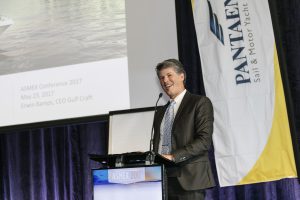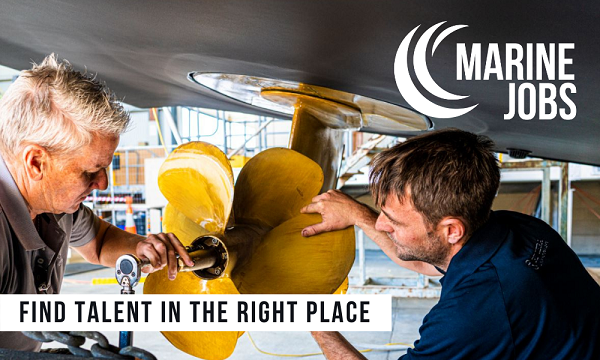The Australian marine Industry has extraordinary potential – it just needs to be unlocked with the right conditions. This was the consensus of the 260-strong group of international and local industry professional gathered today at the 7th edition of the Australian Superyacht, Marine Export & Commercial Marine Industry Conference (ASMEX).
The first day started on a strong note as President of AIMEX, Richard Chapman, opened by referencing the much-anticipated Australian Superyacht Industry Economic Impact Study and its findings that the industry contributes AUD$1.96 billion to the Australian economy. Professionals from a wide array of yachting, marketing and economics backgrounds presented further information contextualising the Australian Marine Industry and sparking complex conversations.

As Kiran Haslam of Princess Yachts noted, “Today’s conference was full of energy, and the discussions were really thought-provoking. It’s literally a first for me to be in a marine industry conference that is filled to full capacity! The back and forth dialogue was refreshing with many of the speakers and it feels like the room was united in finding solutions to common issues we are all facing. I think ASMEX 2017 is about to pull off something the industry hasn’t seen for many years!”
Conference Chair and Managing Director of The Superyacht Group, Martin Redmayne, directed the room as it delved into the issues facing the Australian Industry, which were described as a lack of understanding and support from government authorities at all ends of the boating and yachting spectrum.
Greg Haines of Gold Coast-based boat builder, Maritimo, explained they receive no financial support for their R&D efforts which are at the forefront of keeping them globally competitive. This is a far cry from the $32,000 per employee for the ailing car manufacturing sector. From manufacturers to captains and service providers, the room called for specific regulation acknowledging its special place in Australia’s economy and social history.
Kevin Merrigan, CEO of stalwart brokerage house Northrop & Johnson, was on point when he observed the very many tangible and intangible benefits found in Australia available to the yachting community. To complete the full value proposition, he counselled the industry to look at the Floridian model of simple and low taxes, standardised agreements and developing the charter market which has propelled the yachting industry as the second largest in the state behind tourism.

More than just the antiquated regulatory environment for international yachts and the lack of support of innovation, the Australian yachting industry stands at the precipice of great regional opportunity to lead collaborative marketing and lobbying efforts. UAE-based Erwin Bamps of Gulf Craft and Phuket resident Joshua Lee of Lee Marine both espoused the increase of flow on of superyacht traffic from their regions to Australia with increased interest, development and de-regulation in their markets.
Finally, the delegates were given a taste of Damen Shipyards global business model from Roland Briene, Area Manager Asia-Pacific, and their plans to invest further into Australia predominantly off the back of the commercial marine and defence maritime sectors.
Julie Cook, CEO of The Yard Brisbane, summed the day up well when she said, “It was a very interesting day particularly listening to representatives of international companies invested into Australia. Certainly, hearing them should be motivating for Australian companies to continue to reinvest in their future. The Yard Brisbane is doing so yet the sustainability of the marine industry will be more assured with a commitment from government to address the regulatory constraints which currently exist.”
MaryAnne Edwards is the CEO of Superyacht Australia and the Australian International Marine Export Group and organises the conference. “We have been having conversations with various politicians, state and federal, for over a decade trying to explain the value of this niche industry and what additional potential it has in the right regulatory context,” she explained. “Today reiterated the state of play for the industry and I am confident delegates heard new and insightful commentary from around the globe.”
The second day of the ASMEX Conference may prove to be pivotal as the recently completed economic impact study will be tabled which lays out the industry’s current value and future potential. It is expected to quantify the missed income and economic impact by not having dedicated legislation and regulations for the boating and yachting sectors.




